Free Website Designers Who Give You Domain Name
The first domain name in history was Symbolics.com, which was registered on March 15, 1985. Today, there are more than 300 million domain names, with millions more added each year. A domain name is essentially the address that visitors will type into their browser address bar to arrive at your website. Domain names allow users to easily connect to other computer IP addresses by typing in an address like "Google.com" instead of Google's numerical IP address of "74.125.239.116." In other words, domain names make our lives a lot easier. Image Source Your domain name is an important part of establishing your brand. No two domain names can be exactly alike, although they can be similar. Ideally, your domain name will be unique and distinctive, so users don't confuse it with other domain names or different businesses. You might be wondering — isn't a domain name, then, simply a website? Although they are similar, domain names and websites have important differences. Your domain name is the address for your website; it is what people use to find your website, which consists of pages, images, and other files. Choosing and registering a domain name is often the first step when building a website. Read on to learn how to register a domain name. Image Source The non-profit Internet Corporation for Assigned Names and Numbers (ICANN) oversees the entire system of domain names, and it allows outside companies, called domain registrars, to sell and manage domain names. You will need to register your domain name through a registrar. Some of the most popular domain registrars include GoDaddy, Bluehost, and Domain.com, although there are many more to choose from. Be sure to carefully consider pricing and policies for each one before choosing your domain registrar, as it will be managing your domain name. Once you have found the right domain registrar for you, you'll need to search for your domain name using the registrar's search bar. There are millions of domain names out there, with thousands more added daily. If you have your heart set on a domain name before doing a search, you might be disappointed to find it is already taken. Keep an open mind and incorporate important keywords into your domain when appropriate. Once you've brainstormed several domain options, consider which ones are available and choose the one that fits your brand best and will also be easy for users to find. After settling on the domain name, consider the suffix. The most popular suffix is .com, although .net and .org are also popular. These are considered to be top-level domains, or the highest-level domain suffixes in the domain naming system. There are also other varieties to consider, such as country code top-level domains. These domain names end in a suffix that is particular to a specific country. A website in Germany might end in .de, for example. Finally, there is another class of domain name suffixes called "sponsored, top-level domains," which are sponsored by a specific community related to the domain name. For example, .gov is for the U.S. government and .edu is for education organizations. For most websites, .com is the best suffix for its ease of use, but if you have a specialized website, you might consider a country code or sponsored top-level domain. When you have settled on the domain name and a suffix, you will pay to register the domain name with the domain registrar. This is not a one-time purchase, however. Typically, you will pay to own the domain name for one year, after which you can renew your registration for a fee. You can expect a registration fee of about $10 to $15. Image Source When you register a domain name with ICANN, you must provide your contact information including your name, phone number, physical address, and email address. As soon as your domain name is registered, this contact information becomes available to the public — unless you pay for domain privacy through your domain registrar. This domain privacy will shield your information from view keeping your personal information safe from spammers or worse, identity thieves. Image Source Once you've got the domain name in hand, you're ready to find hosting and build your website. Consider a free CMS, like HubSpot, to design your website, strategize for SEO, and create a blog. According to HostGator, domain name cost ranges from free to tens of thousands of dollars, with the average domain name settling around $10-$12 annually. These factors will affect what you'd pay for a specific domain: Whether you choose a free or paid domain will depend on your budget and your website's purpose. For example, you might need a basic website or something simple and temporary. In that case, a free domain name might be a good option. However, paid domain names look more professional and are more likely to grow with your brand. You should ultimately decide what will work best for your business and goals. Looking for a free domain name? There are several domain registrars, website hosting providers, and website builders offering free domain names, typically with the purchase of another service or with no cost but some customization limitations. Image Source Wix is a popular drag-and-drop website builder that allows you to register a free domain name with the stipulation that it includes Wix's name as well. This means that although you get your domain name for free, it will read yourdomainname.wix.com. This is a trade-off to consider when registering a domain name for free. Image Source Like Wix, Weebly offers a simple website builder with a free domain name that will appear as yourwebsite.weebly.com. You will have limited access to the site-building features, but you will save annual fees for domain names. This is a great option for temporary or basic websites. Image Source Bluehost is a web hosting provider that will offer you a free domain name for one year with the purchase of its web hosting plan. If you are in the market for both a domain name and a web hosting provider to get your business online, this can help you save money on the first year's expenses by adding the domain name on for free with a purchase you were already planning to make. Image Source WordPress will also offer a free domain name, although it will appear as yourdomainname.wordpress.com. If you register your domain name here, you can easily build your website with WordPress, too. WordPress is the most widely used content management system, so you'll find it easier to add functionality with plugins and get support when you need it. Image Source Another web hosting provider, GoDaddy offers free domain names, so long as you purchase one of its hosting plans. GoDaddy is loved for its low rates for hosting plans and its added security tools that scan for and remove malware and backup your website. After weighing the benefits and drawbacks of free or paid domains, you should get started on your search for the perfect domain name. Domain names can go quickly — and there's a little more competition than Symbolics had in 1985 — so it is important to register the one you want before it is too late. Registering a domain name is quick and easy, but it does take some time to brainstorm the right name, select the optimal suffix, and find the right domain registrar for you. As such, there's no better time than now to get started on registering your domain name. Editor's note: This post was originally published in February 2020 and has been updated for comprehensiveness. 

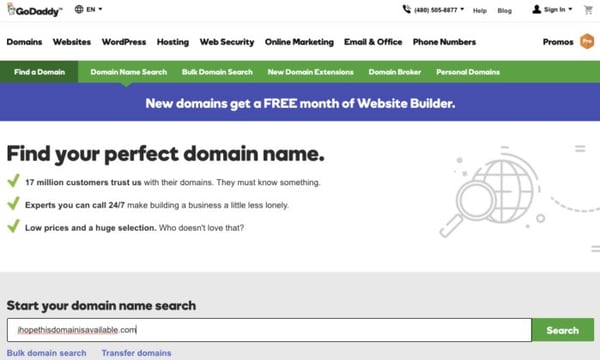
How to Register a Domain Name
1. Find a domain name registrar.
2. Search for your domain name's availability.
3. Finalize your domain name choice.
4. Choose a domain name suffix, such as .com or .net.
5. Purchase the domain name.
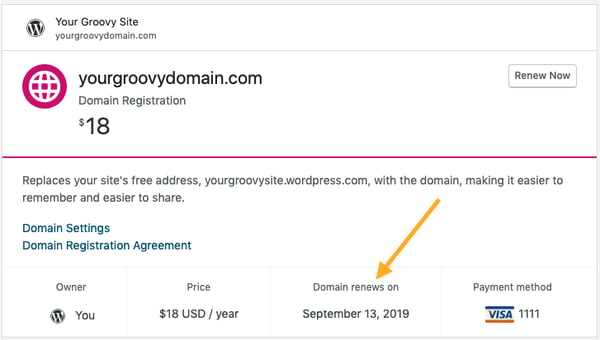
6. Add domain ID protection.
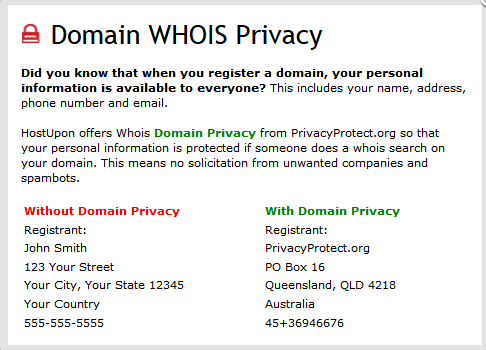
Cost to Register a Domain Name
How to Register a Domain Name for Free

1. Wix
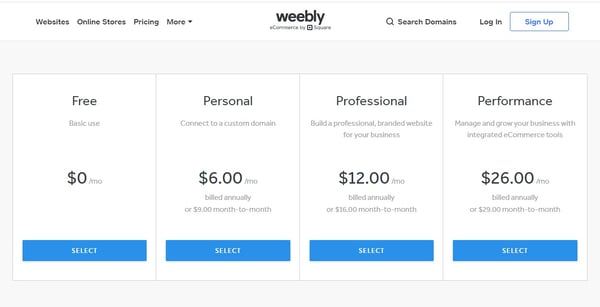
2. Weebly
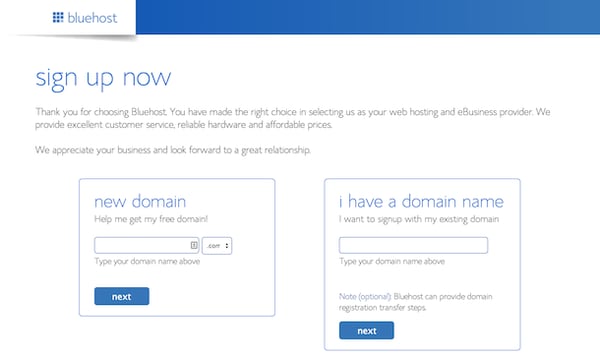
3. Bluehost
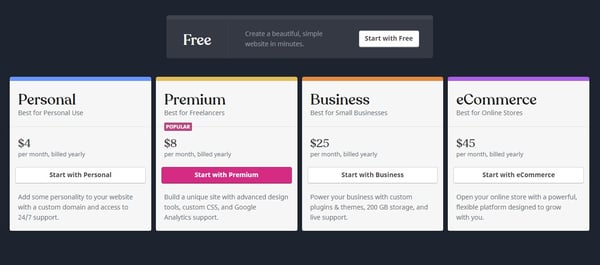
4. WordPress
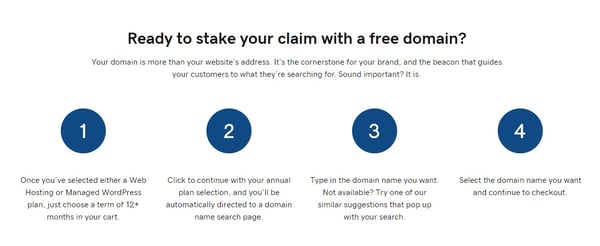
5. GoDaddy
Build Your Business By Registering Your Domain


Originally published Dec 13, 2020 7:00:00 AM, updated July 20 2021
Free Website Designers Who Give You Domain Name
Source: https://blog.hubspot.com/website/how-to-register-domain-name
Posted by: raysusuct.blogspot.com

0 Response to "Free Website Designers Who Give You Domain Name"
Post a Comment